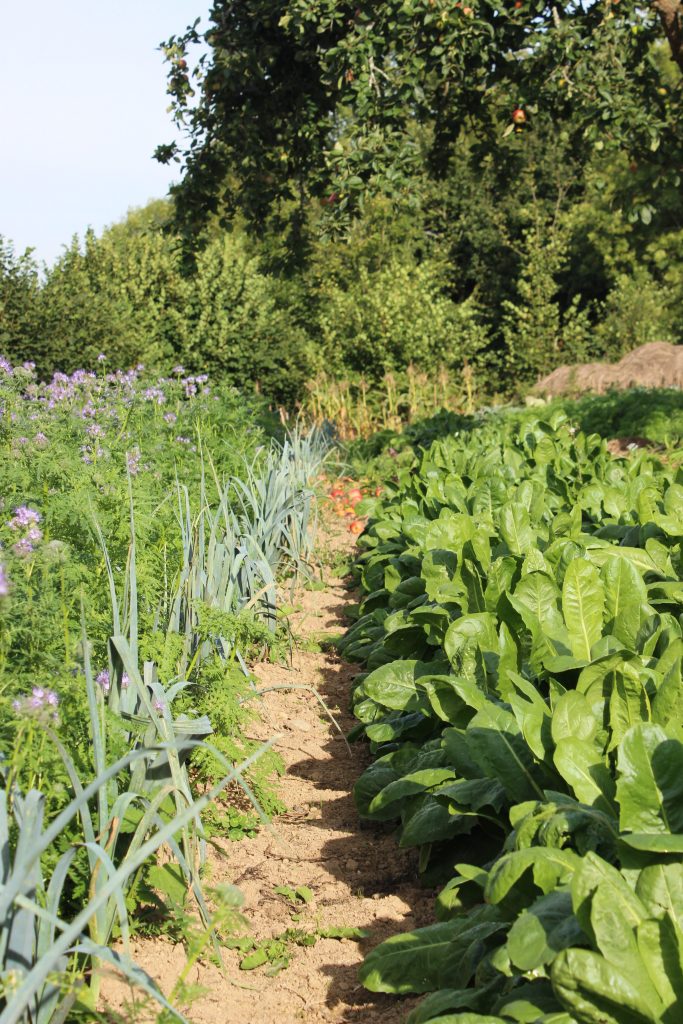
The work done earlier in the year can be seen to be paying dividends as the summer progresses. The picture above was taken at the beginning of October, when the vegetable garden is at its peak; chicory and leeks can be seen in the foreground, green manure (phacelia) has been sown on the left where a few rows of potatoes were harvested earlier in the year, and a row of parsnips are visible on the top right. A small patch of sweet corn is growing at the bottom of the garden, and in front of that, there are courgette, cucumber, and chilli pepper plants.
The vegetable garden requires a fairly small amount of work, but a good deal of intelligence. All the crops visible in the picture will have to be cleared over the course of the winter, and the ground given a generous covering of mulch and compost. Strips of the garden can then be thoroughly worked with a hoe, and raked prior to the planting of each crop. When the seedlings first come up, they may have to be weeded by hand, and thinned out, and then have to be kept free of weeds by regularly hoeing between the rows. In dry periods, the seedlings need to be watered.
If the work is done well, the vegetable garden will be the most productive area of the farm, and its fertility is maintained by giving it the best, and the most, compost. The most important work done for the vegetable garden is not done in the vegetable garden itself, it involves cutting, wheeling and stacking vegetable material from wherever you can on the farm. The heaps are then turned regularly until they have turned into soil-enriching compost.